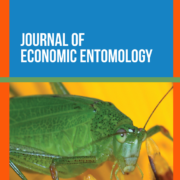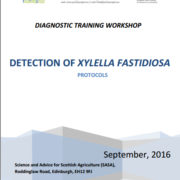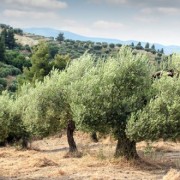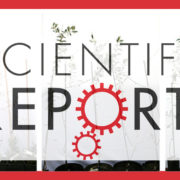Plant Selection and Population Trend of Spittlebug Immatures (Hemiptera: Aphrophoridae) in Olive Groves of the Apulia Region of Italy
Affiliations
(1) Centro di Ricerca, Sperimentazione e Formazione in Agricoltura Basile Caramia, Via Cisternino, Locorotondo (Bari), Italy. (2) CNR-Istituto per la Protezione Sostenibile delle Piante, SS Bari, Via Amendola, Bari, Italy. (3) CNR-Istituto per la Protezione Sostenibile delle Piante, Strada delle Cacce, Torino, Italy. (4) Dipartimento di Scienze Agro-Ambientali e Territoriali, Università degli Studi di Bari Aldo Moro, Via Amendola, Bari, Italy. (5) Dipartimento di Scienze Agrarie, Forestali e Alimentari, Università degli Studi di Torino, Largo Paolo Braccini, Grugliasco, Italy.
Abstract
The xylem-limited bacterium Xylella fastidiosa Wells is the causal agent of severe diseases of several cultivated and wild plants. It is transmitted by xylem-sap feeder insects, such as spittlebugs (Hemiptera: Cercopoidea) and sharpshooters (Hemiptera: Cicadellinae). A dramatic epidemic of X. fastidiosa subspecies pauca sequence type 53 is currently affecting a large area of the Apulia Region of Italy, where it is spread by Philaenus spumarius L. adults within olives. In 2015 and 2016, field surveys were carried out in Apulian olive groves to investigate host plant selection of spittlebug nymphs, to identify the main plant species that can act as reservoirs of the vectors. Two different sampling methods were used: randomized plant sampling and quadrats sampling. Host plant selection by P. spumarius and Neophilaenus campestris (Fallén) nymphs was estimated using Manly’s selection index. The botanic families presenting the highest number of plants infested by P. spumarius nymphs were Asteraceae, Fabaceae, and Apiaceae. Nymphs of P. spumarius were sampled on 72 plant genera, and among the most common 25 genera, Sonchus, Knautia, Glebionis, Urospermum (Asteraceae), Medicago, Vicia, Melilotus (Fabaceae), and Daucus (Apiaceae) were the ones selected preferentially, according to Manly’s index results. Populations of P. spumarius nymphs peak in early April, with densities ranging between 10 and 40 nymph/m2, were about 10-fold those of N. campestris. Plant infestation rate by spittlebug nymphs in 2016 was significantly higher in olive groves located in Lecce province (infected area) than those situated in Bari province (noninfected area).
This work was partially supported by funding from the European Union’s Horizon 2020 Pest Organisms Threatening Europe research and innovation program under grant agreement number 635646.
Published on September 28, 2018 by JOURNAL OF ECONOMIC ENTOMOLOGY









